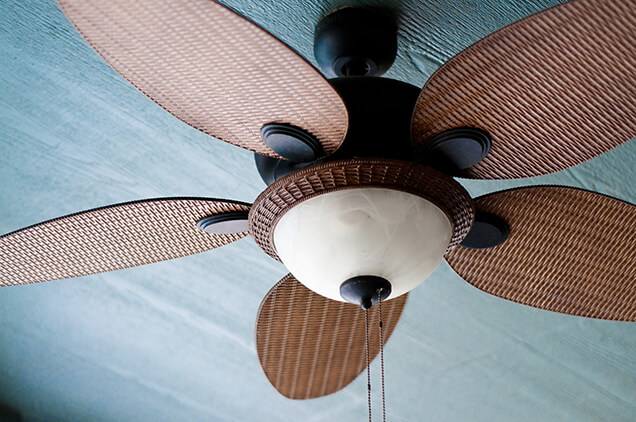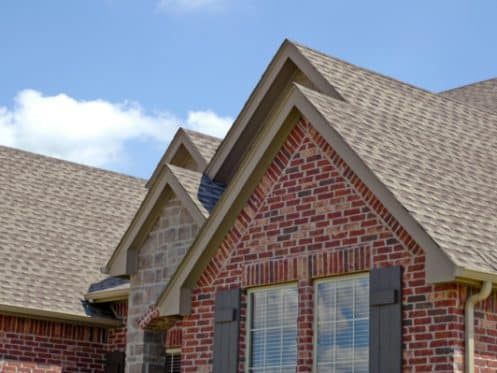Updated: January 2024
Having high ceilings in your home is great in terms of aesthetics. However, high ceilings do have their drawbacks as well. Specifically, owning a home with high ceilings means you will end up spending more on energy costs to keep your home cool. The height of your ceilings plays a major role in how effectively your air conditioning cools your home and how long and how frequently it needs to run to maintain a consistent temperature. With that in mind, let’s look at how high ceilings affect AC efficiency as well as the other impacts that they can have on your HVAC system.
The Impact of Ceiling Height on AC Efficiency
High ceilings generally have a much greater impact on your heating system than they do on your air conditioning. This is because hot air rises, which means that most of the heated air from your furnace will settle near the ceiling. Nonetheless, high ceilings do negatively impact air-conditioner efficiency as well.
As ceiling height increases, it also increases the total volume of air that your AC system needs to cool. This has a direct effect on AC efficiency as your air conditioner will generally need to run longer and more frequently.
Even though the cold air from your AC will settle closer to the floor, the increased air volume still means that your AC will have to work harder to keep your home sufficiently cooled. As a result, your yearly cooling costs will be higher in a home with high ceilings than they would be in a similarly sized home with standard-height ceilings. The increased workload also means that your AC may have a shorter life span and/or may need more frequent repairs.
Why Ceiling Height Is Important When Sizing an AC Unit
Ceiling height is an important factor when determining what size of AC unit your home needs. When sizing an air conditioner, HVAC technicians take several different factors into account, including climate zone, number of occupants, window size, and location. Nonetheless, the most important factor is the total size of the home, which is usually measured in square feet. However, if the home has high ceilings in some or all rooms, the size is often calculated in cubic feet instead due to the increased air volume.
Calculating BTUs needed per cubic foot is easy. All you have to do is multiply the total cubic footage by three to determine how many BTUs are needed. A 1,500-square-foot home with 8-foot ceilings has a volume of 12,000 cubic feet, which means 36,000 BTUs of cooling are required. Central air conditioners are measured in tons, and every 1 ton is equal to 12,000 BTUs. In this situation, you would need at least a 3-ton AC (36,000/12,000=3).
However, a three-ton AC unit definitely would not be sufficient if that same 1,500-square-foot house had an average ceiling height of 10 feet instead of the standard 8-foot ceilings. The 10-foot-high ceilings would increase the volume of the home by 3,000 cubic feet. This means that you would need a minimum cooling output of 45,000 BTUs, which is the equivalent of 3.75 tons.
However, ACs are sold only in half-ton increments, which means you would need to choose between a 3.5-ton or 4-ton unit. It is always best to round up to the higher number. If you round down, the cooling output of the smaller unit generally wouldn’t be sufficient to properly cool your home.
Also, you’ll have to pay more for a new AC than you would if you had standard-height ceilings. The larger the AC unit is, the more energy it will also use. This results in higher electricity costs, as well, and this doesn’t even take into account the reduced efficiency that the higher ceilings cause.
How to Overcome the Effect High Ceilings Have on AC Efficiency
While high ceilings will always reduce the efficiency of your air conditioning system, there are ways that you can help overcome this problem. Making sure to have your cooling system professionally maintained every year is one of the biggest keys. An AC tune-up involves inspecting and calibrating your entire cooling system. This helps improve the system’s energy efficiency and ensures that it is functioning at its peak effectiveness.
The biggest benefit of this is that it allows you to set your thermostat to a slightly higher temperature without harming your comfort.

According to the EPA, using ceiling fans during the summer allows you to raise the temperature of your thermostat by up to 4 degrees without any noticeable change in your overall comfort level. This means that if you set your thermostat to 74 degrees with ceiling fans running, the home would feel the same temperature as if you didn’t have ceiling fans and left your thermostat set at 70 degrees.
ENERGY STAR states that setting your thermostat higher and using ceiling fans can reduce your annual cooling costs by approximately 14%. While this may not sound like a huge amount, it can quickly add up and potentially save you hundreds of dollars over the life of your AC system.
Also, when it comes time to replace your old air conditioner, homeowners with high ceilings should consider opting for a higher SEER model. SEER is how the energy efficiency of AC units is measured. By choosing a higher SEER unit, you can reduce your overall cooling costs without impacting your overall comfort.
Most high-efficiency AC units are variable speed. This means that the system can switch and run at a lower speed whenever less cooling output is required. Unlike single-speed AC units that frequently turn on and off, variable-speed ACs will run for longer periods at a much lower speed. This can greatly reduce energy costs as the vast majority of the electricity an air conditioner uses is when it turns on. By limiting how often the system needs to turn on and off, variable speed units use far less energy.
Professional Air Conditioning Services
If you need an AC repair, AC installation, or AC maintenance service in Antelope Valley, Affordable Air & Heating is here to help. We have locations in Canyon Country and Lancaster, and we have been helping customers meet their home comfort needs for more than 25 years. Financing for new air conditioners and other HVAC equipment is available on approved credit, and we back up all work we perform with a 100% satisfaction guarantee. To learn more about your options for overcoming the effect that high ceilings have on your HVAC system, give us a call today. We also offer services related to heating equipment and air quality.
Contact Affordable Air & Heating today to learn more



